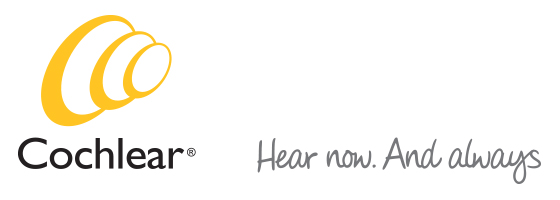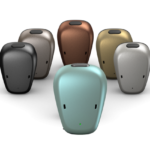Flexibility in the Classroom: the Cochlear™ Mini Microphone 2+
By guest author: Janet Clarke, Au.D.
The Cochlear™ Nucleus® 6 (CP910, CP920), Kanso®(CP950), and Nucleus 7 (CP1000) Sound Processors, the Cochlear Baha® 5 series Sound Processors, ReSound hearing technology, and the Cochlear Mini Microphone 2+ (MM2+) are all great friends in the classroom! Direct streaming from the MM2+ to the processor(s), or processor and hearing instrument, offers a discreet option for enhanced listening to classroom instruction. No additional hardware is attached to the sound processor and/or hearing instrument. The MM2+ can be either worn by the teacher, used as a tabletop conference microphone, used to receive audio from a room loop via the Telecoil setting, or used with another audio input via the Line-in Direct Audio Input.
Cochlear™ Baha® with Mini Microphone 2+ (MM2+) and school
By guest author: Amy Donaldson, Au.D.
Children in schools today often find themselves in dynamic learning environments, especially where listening is concerned. The “typical” classroom, where the teacher stands in the front of the room to lecture while the student spends all day listening, is truly becoming a relic of the past. Today’s students may find themselves working on projects in pairs or small groups, participating in large group discussions or listening to videos or computer-based training or assessments.
With the shift in learning methods, more and more flexibility is required in remote microphone technology. Anyone who has spent time in a classroom where small group work is taking place will know that the need for an improved signal-to-noise ratio is still real. The MM2+ offers a flexible and affordable remote microphone solution for recipients of Baha® users. Consider the following classroom uses for the
MM2+:
- Traditional: Give the MM2+ to the teacher for an effortless and direct connection between the teacher’s voice and the student’s Cochlear™ Baha 5 Sound Processor.
- Conference mode: Switch the MM2+ into conference mode by laying it horizontally on the table during small group activities.
Direct audio input: Plug the MM2+ into any external audio source (i.e., smart board, computer or tablet) for a direct connection to classroom technology. - Telecoil: Switch the MM2+ into T-coil mode to easily pick up room loops during field trips or assemblies.
- Europin connection: Attach a universal remote microphone receiver to connect the student to any FM or DM system that is utilized in the classroom.
The best thing about the MM2+ is the ease of use – students can switch modes easily using the button on the back of the device and 2.4 GHz wireless technology means the MM2+ connects directly to the processor without the need for external neck loops or dongles.
Share these videos with your patients to help them connect to the MM2+ on their own:
- How to Use the Cochlear Nucleus 7 Sound Processor with the Mini Microphone 2+: https://youtu.be/L0QabL0JtLg
- How to Use the Cochlear Nucleus 6 Sound Processor with the Mini Microphone 2+: https://youtu.be/ap4K9xHvxLM
- How to Use the Kanso Sound Processor with the Mini Microphone 2+: https://youtu.be/7IhG0-2GnuU
- How to Use the Baha 5 series processors with the Mini Microphone 2+: https://youtu.be/PguQRovbGJQ
Visit our website for more information on the Mini Microphone and Mini Microphone 2+.
About our guest authors:
Dr. Clarke is a Professional Education Manager for Cochlear Americas. She joined Cochlear in 1998 and has been in various Clinical or Learning roles throughout her career at Cochlear. She has been an audiologist since 1992, working with cochlear implants since 1993 and Baha since Cochlear’s acquisition of Entific in 2005. Prior to joining Cochlear, Janet worked at the University of Illinois at Chicago. Janet has her AuD from the University of Florida, and did her undergraduate & graduate degrees at Purdue University.
Amy Donaldson is an Audiologist and Professional Education Manager for Cochlear Americas. She received her Master’s Degree in Audiology from the State University of New York at Buffalo and her AuD from the University of Florida. She was privileged to begin her career as a pediatric audiologist and gain extensive clinical experience in implantable hearing devices at the University of Michigan in Ann Arbor and at the Manchester Cochlear Implant Programme in the United Kingdom. After working for several years as an Educational Audiologist and Technical Support Audiologist in the hearing aid industry, she returned to hearing implants and Cochlear in 2011.






